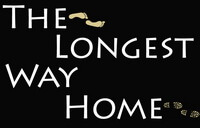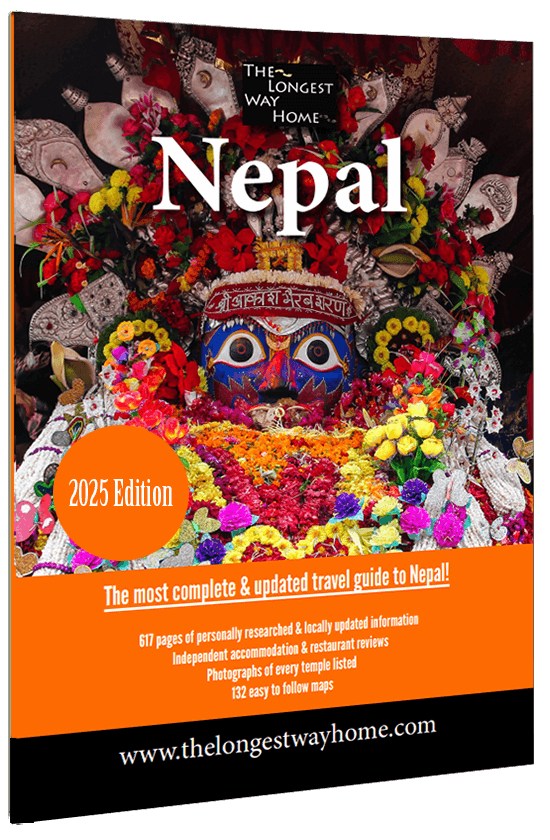About Nuwakot
The proud historic fortresses of Nuwakot (meaning nine fortresses - नुवाकोट जिल्ला) still stand despite damage from the 2015 earthquake. Originally built by the Newari to protect the trading routes from Tibet the fortresses are the starting point of Nepal's unification.

Located outside of the Kathmandu Valley, Nuwakot is only one of a few places in Nepal where you can see Newari buildings. It's very much an "off-the-beaten-track" destination, so be prepared for either private transport or a rough journey there. For historians, those seeking an "undiscovered" part of Nepal, or for those looking for an adventure, Nuwakot won't let you down.
Nuwakot is battered and torn. The old fortress itself is teetering on the edge of a mountain ridge. While opposite it, the old Malla Durbar Square is crumbling away.
The ancient Taleju temple still stands on a hillock overlooking all, though. A rare chance to visit an off-limits place. Though battered and in some senses broken, there’s a sense of pride, value, and historic preservation here that makes one feel the trip was indeed worthwhile.
Did you know?
Nuwakot stands over the Trisuli river. The surrounding area is famous for its coffee plantations and homestays. Visiting Nuwakot during peak season can give you epic views of Nepal.
History of Nuwakot
Nuwakot is noted as being a fortress area during the reign of the Mallas in the Kathmandu Valley 1201–1769 CE. This period was when Nepal was still a collection of kingdoms with Kathmandu, Bhaktapur, and Patan being controlled by the Mallas.

An outsider coming from Gorkha, King Prithvi Narayan Shah (1723-1775), captured the hill station of Nuwakot with the plan that he would use it as a base to conquer the entire Kathmandu Valley by cutting off the supply line from Tibet. His first attempt failed in 1743. His second attempt succeeded and started a chain reaction of conquests that saw the fall of the Malla era.
With Nuwakot under his control, the king built massive military towers on the surrounding hills which effectively blocked off trade into the Kathmandu Valley.
The Mallas would not go easily though, and it took three attempts for King Prithvi Narayan Shah to conquer Kirtipur alone. Then came the fall of Patan followed by Bhaktapur and finally Kathmandu.
King Prithvi Narayan Shah unified the kingdoms into one, which was his plan to prevent the British from colonizing Nepal, much like it was doing in India. The King died in 1775 at the age of 52 in the fortress palace at Nuwakot before the full administration of Nepal was completed. His sons continued the work which continued on through to modern-day Nepal.
In 2018, it was discovered that Chinese renovation of the area would be carried out. Unlike in highly populated areas like Kathmandu, there are only a few people here who have voiced concern at cheap modern construction methods. Moreover, there are rumors of eco-style leisure parks that worry many about the surrounding environment and culture.
For now, it's a case of get there before it's gone.
Things to see & visit in Nuwakot
As you make your way along the winding, steep road on the hill to Nuwakot, the landscape becomes near on medieval. The green valley below is dotted with trees and farmlands, all watched over by the foreboding fortress tower you are approaching. Although there are "nine fortresses," there really is only one worth visiting. The all-dominating block-like structure built in 1762, that seems to be perched onto the top-side of a cliff, is the former palace of King Prithvi Narayan Shah. The building used to house a museum which opened in 2011 but is now closed. A quick look around the back of the building will show you why. Huge metal poles line the entire rear wall propping the entire building up. Previously, the first floor was a reception for the museum. The second floor contained a room used for religious purposes. The third floor contained the living quarters of the king and his two wives. Interestingly, the rooms of the wives were designed so that they could only be entered through via the king's room. You can still note the balcony encircling the entire floor from which provides a panoramic view of the surrounding hills. On the fourth floor, there was a small security group to keep the king safe. The fifth floor comprised of a large banquet room. The sixth floor was an interrogation room with incredibly low (four feet) ceilings. Lastly, the seventh floor is the smallest and known as the "Burja" from the Arabic word which means tower. It was used as a lookout tower. Although it's hard to tell now, but the building used to have four floors plus a slanted roof. Today, it's been reduced to only two floors. It will have to be completely rebuilt. Beside the damaged Garad Ghar is the old dance hall building known as Ranga Mahal. Though both Garad Ghar and Ranga Mahal may look like any other Newari building, one must take into consideration they were built by a Shah king. Their resemblance to Malla architecture is because the king used designers, artists, and workers from Patan to construct these buildings. This temple was once a two-story Newar style building until the earthquake in 2015. The Bhairab temple itself is said to be one of the oldest in Nepal, though exact dating has never been confirmed. You can enter the temple complex from a series of stone steps that lead down. The inner courtyard is still in very good condition, considering the overall damage to the temple. Of particular note is the impressive gilded entrance way. During the Sindur Jatra festival (March/April), a local priest drinks the blood of an entire buffalo and then vomits it back up. Some worshipers have been known to then drink this minute as a sign of devotion! Sometimes confused with being the actual fortress, this 35m block-like temple is dedicated to the goddess Taleju. Similar to the Kathmandu Taleju temple, it cannot be entered even by Hindus aside from a single day during the Dashain festival. The temple itself took damage in the 2015 earthquake and took both internal and external damage. From the hillock, you can get an impressive few over Nuwakot Durbar Square. Here's more you can read about visiting Nuwakot. It was announced in 2018 that Nuwakot would be reconstructed by the Chinese. However, no data on who exactly would be doing the reconstruction and if it would be the widely criticized "concrete" reconstruction or the preferred traditional reconstruction. In 2019, tarpaulin was placed around much of the main Durbar in Nuwakot with Chinese construction writing on it. As of this publication, reconstruction has not started. The area is still open to tourists, though much like after the earthquake, the main palace is off-limits. However, in 2024, scaffolding and tarpaulin
still cover a lot of the main palace as Chinese builders repair the temples.
There is no timeframe for when it will be complete. There are very few places to stay in Nuwakot though some "homestays" are popping
up. However, so are commercial homestays. Do be carefully if searching for places to stay in Nuwakot online as many hotels list themselves in Nuwakot but are actually many miles away. If you are looking for a homestay then you can contact me to see if they are open yet. There are none! Down by the main road will be some roadside eateries but take care due to hygiene. It's better to brink a packed lunch to Nuwakot if you are only visiting for the day. Buses leave from Gongabu Bus Park in Kathmandu to Bidu or Trisuli Bazar, taking around 4 hours. From Bidu, it's easiest to hire a motorbike taxi to take you up the hill to Nuwakot; otherwise, it's a 1.5-hour walk! Do check in Bidu to find out when the return bus to Kathmandu is expected and time your visit to Nuwakot accordingly. Taking the first bus from Kathmandu is advisable! Full transport details are in my Nepal guidebook below. This map of Nuwakot will show you where the most popular attractions are. For a more detailed map see my Nepal guidebook. Enjoyed this content? My guidebook will elevate your Nepal journey! Crafted with passion, my book stands
out for its precision, rich detail, and stunning photography. Dive into comprehensive coverage of Nepal's wonders, with meticulously planned walking tours and insider tips that bring you the essence of exploration. Choose your format—print or digital—and let this guidebook be your ultimate travel companion to Nepal. Discover why
it's not just good, but the best resource for your adventure.Nuwakot Palace (Saat Tale Durbar)

Garad Ghar (Tilgana Ghar)
 This building used to be the army barracks. It is set behind a peaceful and still scenic garden area. Flanked by two small shrines to Vishnu.
This building used to be the army barracks. It is set behind a peaceful and still scenic garden area. Flanked by two small shrines to Vishnu.Ranga Mahal (Dance Hall)
 It was used to host formal events, ceremonial occasions, and for performing arts. Today, the building still stands with some damage, though no entry is allowed.
It was used to host formal events, ceremonial occasions, and for performing arts. Today, the building still stands with some damage, though no entry is allowed.Bhairab Temple
 At first, the earthquake damaged the second roof but subsequently, it needed to be taken down for safety reasons.
At first, the earthquake damaged the second roof but subsequently, it needed to be taken down for safety reasons.Taleju Temple
 It was built in 1564 by King Mahendra Malla. The goddess Taleju was from South India but adopted by the Malla royals in the 14th century.
It was built in 1564 by King Mahendra Malla. The goddess Taleju was from South India but adopted by the Malla royals in the 14th century.
Nuwakot reconstuction
Accommodation in Nuwakot
Restaurants in Nuwakot
 The Famous Farm is about the only place you'll get "tourist" food. Even local places are hard to find. There is a local shop near the Nuwakot Durbar Square entrance selling snacks and drinks.
The Famous Farm is about the only place you'll get "tourist" food. Even local places are hard to find. There is a local shop near the Nuwakot Durbar Square entrance selling snacks and drinks.
How to get to Nuwakot
Map of Nuwakot
Upgrade Your Adventure: Get My Nepal Guidebooks!
Was this page helpful to you? If so please tell others!



